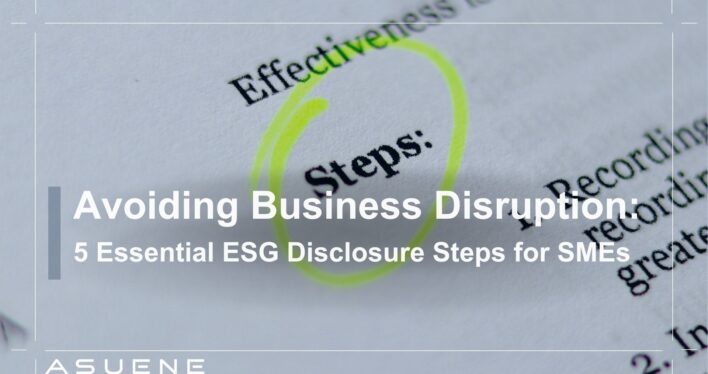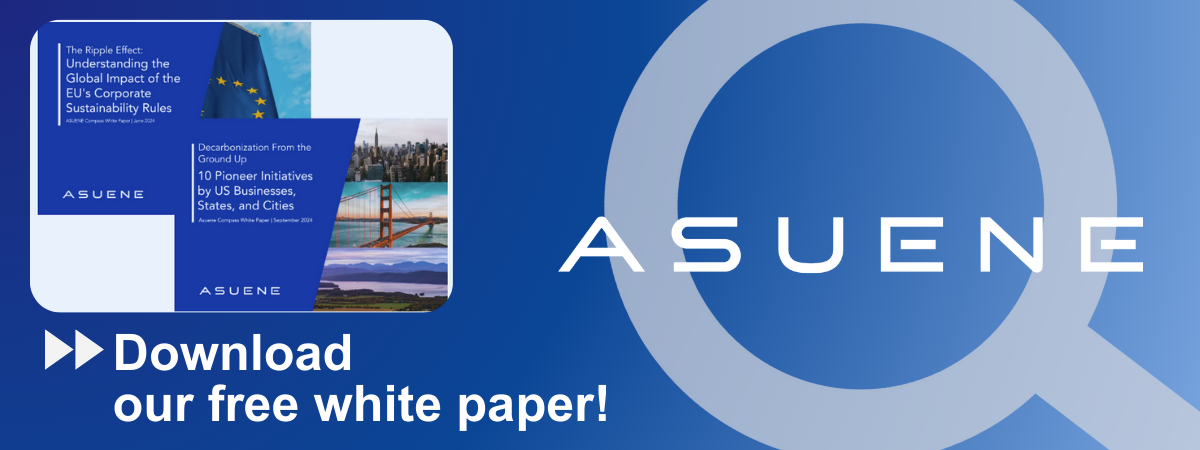- Article Summary
-
Introduction: Why ESG Disclosure is No Longer Optional for SMEs
As regulatory and market expectations evolve, environmental, social, and governance (ESG) disclosure is rapidly becoming a prerequisite for doing business, not just a best practice. While multinational corporations have long been subject to ESG scrutiny, small and medium-sized enterprises (SMEs) are now feeling the pressure to comply—particularly those embedded in global supply chains.
In the wake of new regulations such as the EU’s Corporate Sustainability Reporting Directive (CSRD) and the U.S. Securities and Exchange Commission’s (SEC) proposed climate disclosure rules, large enterprises are pushing ESG requirements down to their suppliers. Failure to provide credible ESG data can lead to exclusion from procurement contracts, strained business relationships, and reputational risks.
Yet, SMEs often lack the resources, expertise, or systems to implement robust ESG reporting. This article offers a five-step roadmap to help SMEs kickstart their ESG journey, mitigate the risk of contract termination, and remain competitive in a sustainability-driven economy.

Step 1: Understand Scope 3 and Its Relevance to Your Business
Scope 3 emissions include all indirect emissions that occur in a company’s value chain—from purchased goods to transportation, and even end-of-life product disposal. For most SMEs, these are the emissions most relevant to their customers, particularly large corporate buyers.
Action Points:
- Learn the basics of Scope 1, 2, and 3 emissions
- Map out where your operations fit into your customers’ value chains
- Identify which categories of Scope 3 emissions apply to your business (e.g., purchased goods, logistics, business travel)
Tip:
Use freely available tools from GHG Protocol or national chambers of commerce to calculate initial estimates.
Step 2: Conduct a Simple Life Cycle Assessment (LCA)
A Life Cycle Assessment (LCA) is a method for evaluating environmental impacts associated with all stages of a product’s life. While comprehensive LCA tools may be costly, SMEs can start with simplified versions.
Action Points:
- Focus on the most resource-intensive products or services
- Collect basic input-output data (energy use, materials, packaging)
- Use free or low-cost LCA tools such as OpenLCA, SimaPro Go, or national databases
Benefit:
Even a basic LCA helps identify high-impact areas where emissions reductions or efficiency gains can be prioritized.
Step 3: Start Tracking and Managing CO2 Emissions by Business Unit
Managing carbon emissions begins with tracking them at the most granular level possible. SMEs should implement a simple system for recording CO2 emissions per unit of activity, whether it’s per product, shipment, or service.
Action Points:
- Set up spreadsheets or simple software tools to record energy, fuel, and material usage
- Use emissions factors (available from EPA, DEFRA, etc.) to convert usage data to CO2 equivalents
- Track monthly to build historical trends and spot anomalies
Tip:
Consider joining local or industry-specific carbon accounting networks for peer learning and shared resources.

Step 4: Disclose Human Capital Metrics
ESG is not only about the environment. Human capital—including employee well-being, diversity, safety, and training—is gaining prominence among investors and regulators.
Action Points:
- Track basic metrics such as turnover rate, injury frequency, gender ratio, and training hours
- Document policies on non-discrimination, fair wages, and worker rights
- Highlight initiatives on mental health, DEI (diversity, equity, and inclusion), or local hiring
Benefit:
Demonstrating commitment to social performance can strengthen employee retention and improve buyer perception.
Step 5: Prepare a Basic ESG Report and Communicate Transparently
Even a simple, well-organized ESG report can significantly enhance an SME’s credibility. Buyers and partners value transparency over perfection. Begin with the data you have and commit to gradual improvement.
Action Points:
- Use a structured format: Overview, Environmental, Social, Governance, Metrics
- Reference frameworks like GRI, SASB, or ISSB for alignment (even if not fully compliant)
- Publish the report on your website or share it with key stakeholders
Tip:
Include both achievements and challenges. Authenticity builds trust.
Conclusion: ESG as a Catalyst for Resilience and Growth
SMEs may see ESG disclosure as a daunting task, but in reality, it offers a powerful opportunity for differentiation. Proactive ESG efforts not only help avoid contract loss but also attract conscientious clients, employees, and investors.
By taking incremental, practical steps—from understanding Scope 3 to sharing human capital data—SMEs can embed sustainability into their operations and future-proof their business. ESG is not merely a cost of doing business; it’s a pathway to long-term resilience and growth.
Why Work with ASUENE Inc.?
Asuene is a key player in carbon accounting, offering a comprehensive platform that measures, reduces, and reports emissions, including Scope 1-3, with expertise in decarbonization. Asuene serves over 10,000 clients worldwide, providing an all-in-one solution that integrates GHG accounting, ESG supply chain management, a Carbon Credit exchange platform, and third-party verification.
ASUENE supports companies in achieving net-zero goals through advanced technology, consulting services, and an extensive network.


